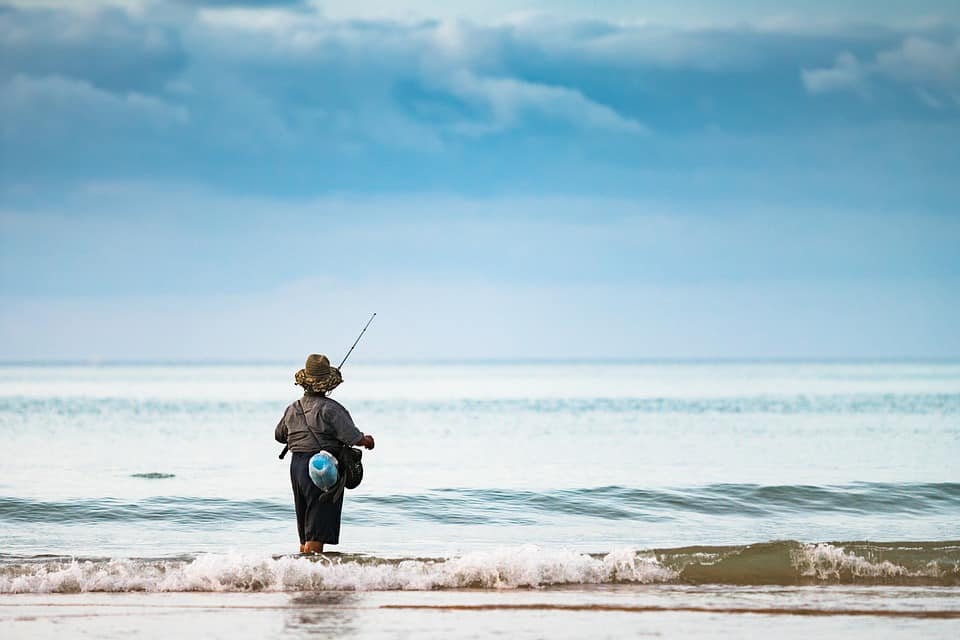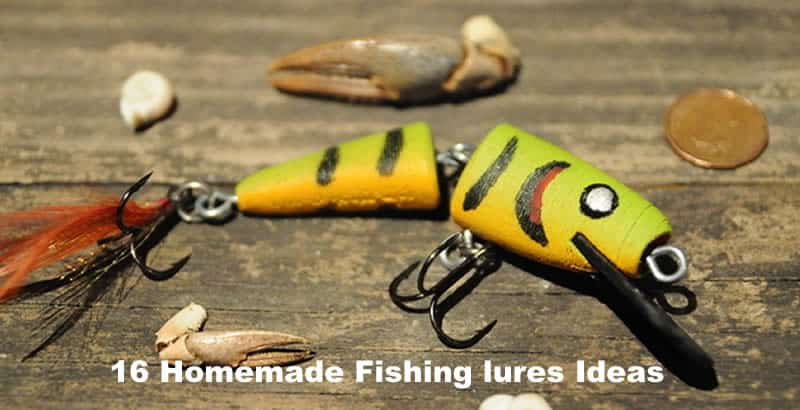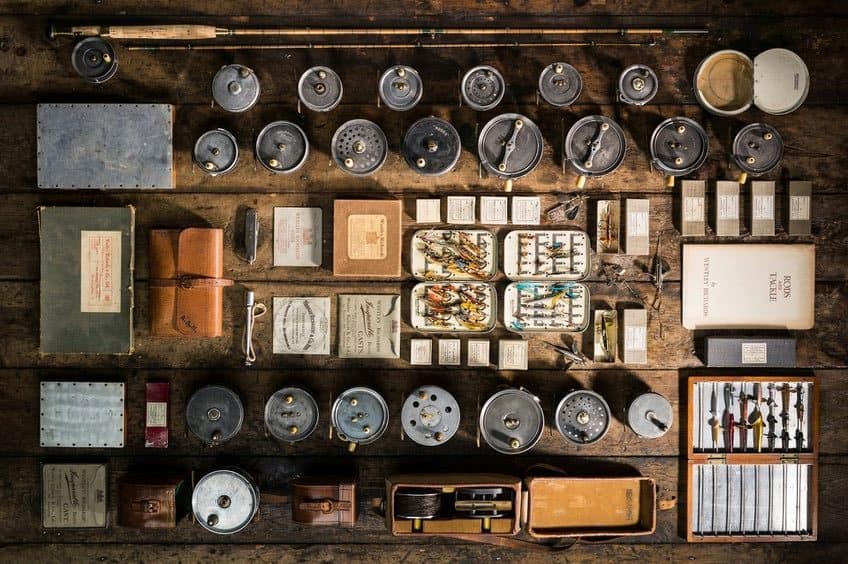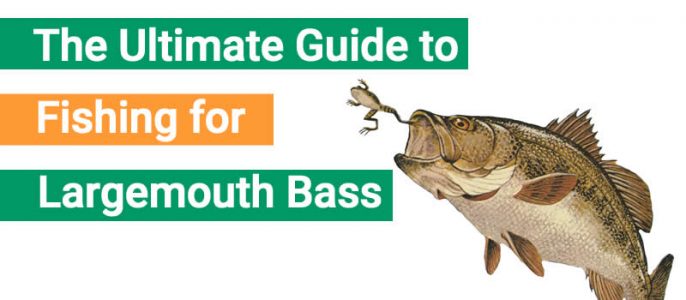If you buy via a link on this page, we may receive a commission, at no extra cost to you.Learn more
While planning your next river fishing trip, you might stumble with the question of what kind of bait you should bring. You must carefully think about what you are fishing before making any decision, as the trip’s success highly depends on the kind of bait that you are using. That is why we bring some useful information about which is the best bait for river fishing.
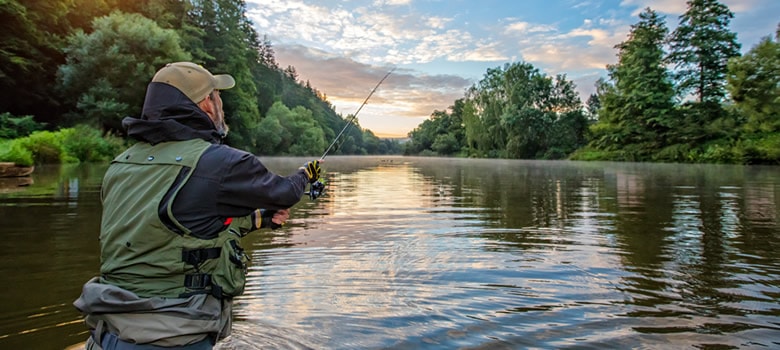
To catch any fish, you must attract its attention first. Sadly, not all of them have the same taste food-wise. Thus, as we said before, the bait depends on the fish that you are targeting. But worms are hands down, the best all-around option. Other great baits are:
- Crayfish- For smallmouth bass, catfish, carp, and bullheads
- Minnows- For bass or pike
- Shrimps- For catfish, bass, catfish, crappie, trout, and others
- Leeches- To catch walleye and northern pike
- Fish chunks- For carp, catfish, and any other fish that rely on scent to catch their prey
Now, it is time we dig deeper and give you more information about each bait and how you should use it to maximize your chances of getting a catch!
Worms
Freshwater anglers have been using worms since the dawn of time. They are widely available in nature, especially in humid soils, and you can also purchase some at the local tackle shop. And the best thing is that fish love them! They have an insane scent, move like crazy once you hook them, and are very juicy. In short, a reliable option for your fishing trip
You might think that all worms are the same, but you are mistaken. If you don’t believe us, type worms for fishing, and you will see that we aren’t lying. Now the question arises, which kind of worm should I buy? Here, we will highlight some of the most common and
- Nightcrawlers: They are the ultimate worm for fishing. They are large, juicy, and move a lot once you hook them. As you can see, they are an irresistible temptation! Nightcrawlers are perfect for walleye, crappies, trout, bass, and even catfish!
- Mealworms: Although not technically a worm, it is an ideal option for small fishes such as crappie, bluegill, and panfish.
- Bloodworms: These are quite large worms. Thus, they are most suitable for large fishes like perch, striped bass, and catfish. Bear in mind that these worms have teeth! So, handle them with care. Otherwise, they will bite you.
- Earthworms: These are the ones you can find in your backyard. Some anglers even make compost to harvest them each time they go fishing. You can use earthworms as a substitute for nightcrawlers.
These are merely a few options you can find many more in the market, including artificial worms. They are the first type of bait that you should learn to master if you are a beginner. Now that you know which are the best worms, it is time to learn how to rig them.
How to Use Worms as Bait
You may think that this is a stupid question. But hooking a worm is not an easy task. Here we present to you three effective ways to hook a worm depending on the fish that you are targeting.
For small fish:
- Grab a small worm and poke the head with the hook. Alternatively, you can take a long one and cut it in half.
- Slide it until the shank and leave the tail dangling.
For game fish:
- Grab an earthworm or nightcrawler.
- Poke the head with the hook.
- Slide the worm until you reach the eye of the hook.
- Now, grab the tail, roll it over the gap and poke it with the hook. Repeat this step two or three times more.
For bottom feeders:
- Grab a large worm.
- Poke the head with the hook.
- Take the rest of the worm, make a loop, and then poke with the hook again. Repeat this step until the gap is full.
Crayfish
These are tiny freshwater crustaceans that look like small lobsters. But the relevant thing is that fish love them! Especially both small and largemouth bass. For some anglers, this is the best bait for river bass fishing.
Although you can harvest them from the river shore, it is quite hard. So, most people commonly purchase them in a tackle shop. This way, you can spend more time fishing fish rather than bait. Now, let’s learn how to use it as bait.
How to Use Crayfish as Bait
The process is not as complicated as with worms. But, how to hook it, and how much of the crayfish you should use depends on the fish.
For small fish:
You can only use the tail if you wish to catch small fish such as panfish. Stick the hook through the entire length of the tail.
For game fish:
If you are targeting bass, we recommend using a whole and alive crayfish. You can stick the hook through the last quarter of the tail.
For bottom feeders:
You can use a whole dead crayfish as bait when fishing for catfish. In this case, stick the hook through the upper section.
As you can see, rigging a crayfish is not as complicated. Still, make sure to keep your fingers clear from the hook as you push it through the shell.
Minnows
Minnows are those tiny fish you see swimming within the river shore. You can effectively catch them using a net, provided that this is legal, of course. Alternatively, you can purchase them in any fishing tackle shop.
You can use minnows to catch almost any fish. The only thing that you should keep in mind is its size. A general rule of thumb is to use larger baitfish for bigger fishes, such as pike and bass.
How to Use Minnows as Bait
There are three common ways to hook baitfish. All of them have a common goal, keep the minnow alive as much time as possible, and allow it to move as freely as possible. So, let’s begin.
The first, and simplest, way to hook a minnow, is through its mount. Make sure to grab both the upper and lower lips. Otherwise, the hook will come loose, and you’ll lose the bait. We highly recommend this method if you like river trolling.
The downside of passing the hook through the fish’s lips is that it won’t be able to open its mouth. Thus, it won’t be able to breathe, which means that, after some time, the minnow will die.
Another method is to pass the hook beneath the dorsal fin. This way, the fish will be able to move, and it will stay alive longer than when hooked through its lips. But you have to hook it right beneath the dorsal fin. A little down and the fish will quickly die.
The last method, which is the most common, is to hook the fish through the tail. Make sure not to pierce the fish too far from its tail, or it in the tail itself.
Related Article: How to Catch Bass with Worms
Shrimps
You can use both freshwater and saltwater shrimps for river fishing. However, the latter doesn’t survive long inside freshwater. Thus, you may have a hard time catching fish that prefers alive bait, such as bass and trout.
Either way, you can use shrimps to target a wide variety of fish, and that is the important thing.
How to Use Shrimps as Bait
Using shrimps as bait is a straightforward process. Hook them by the last third segment of the tail, especially if you are using alive shrimps.
Alternatively, if you are using saltwater shrimp, you can hook them behind the horns, in its body, or pass the hook through the shrimp’s entire body. These methods will instantly kill the shrimp. Thus, we only recommend using them with dead or saltwater shrimps.
Another useful tip is to cook and peel the shrimp. It will increase the scent and, subsequently, enhance your chances of catching fish.
Leeches
It is not the first thing that comes into mind when thinking about bait for river fishing. Mainly because most people are afraid of them due to their blood-sucking behavior. But leeches do work, especially for northern pike, bass, and walleye. Primarily because it is a standard food source for those fishes.
As happens with minnows, the size of the leech influences the size of the catch. Naturally, larger leeches are ideal for larger fishes, and so on.
How to Use Leeches as Bait
First, you must grab the leech by its tail. Don’t worry; it is easy to distinguish the head from the tail since the latter is larger and harder. Additionally, hooking the leech by its tail will allow it to swim more naturally.
Once you have the leech in control, you merely need to poke its tail with the hook. Then, pierce it again in the midsection, and you are ready to cast!
Fish chunks
If you are planning to use dead fish as bait, it is more effective to cut it into pieces, especially if you are targeting fishes that rely on its scent to catch prey.
You can use any fish for this purpose, including tiny baitfish.
How to Use Fish Chunks as Bait
As the fish is already dead, there is no wrong way to hook fish chunks. The only thing we do recommend is to scale the fish but leave the skin on. It will enhance the scent and spread it even further.
As happens with minnows, you should use small pieces for small fishes, and larger chunks for game fishes such as bass.
Grab Your Rod, Line, Boat, and…
Fishing is all about strategy. Thus, choosing the right combination of rod, line, hook, and, of course, bait is crucial for a successful river fishing trip. Therefore, take all the time you need to find the right bait, and to learn how to correctly hook it.
For us, worms are the best bait for river fishing, as most fishes consider it an irresistible snack. Plus, they are extremely easy to find both in nature and tackle shops. And, as you would expect, they are not that expensive. In conclusion, it is a solid option regardless of the river or fish.
But you do have many other options, such as crayfish, leeches, minnows, fish chunks, and shrimps. Therefore, if you dislike worms so much that you can’t even touch them, these are suitable substitutes.

